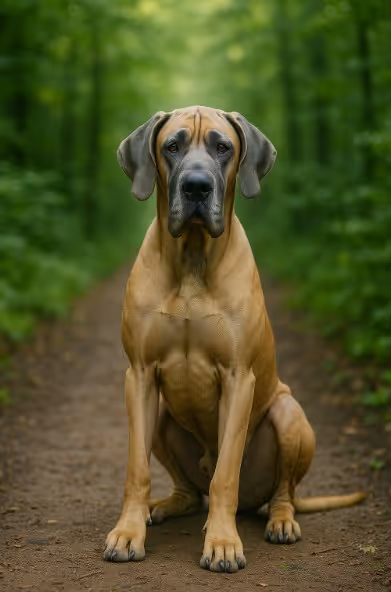The Great Dane, often called the “gentle giant,” is a majestic and affectionate dog breed known for its towering size and loyal heart. Despite their imposing stature, Great Danes are friendly, calm, and excellent family companions. They thrive in homes that can accommodate their size and provide moderate daily exercise along with plenty of affection.

The Great Dane’s origins trace back more than 400 years to Germany, where they were bred as boarhounds and estate guardians. Their ancestry includes Mastiffs and Irish Wolfhounds, combining strength with elegance. Over time, their role shifted from fierce hunters to noble companions of European aristocracy. The breed was officially recognized by the AKC in 1887 and continues to be one of the most recognizable giant breeds in the world.
An imposing giant breed with a sleek frame and elegant stature.
Great Danes are easy to groom but need routine maintenance.
Despite their size, Great Danes are moderate in energy.
Intelligent and eager to please, Great Danes are highly trainable with the right approach.
Proper nutrition supports growth, joint health, and longevity.
As a giant breed, the Great Dane faces specific health challenges.
Due to their popularity, it’s important to find reputable sources for Great Danes.
Are Great Danes good family dogs?
Yes, they’re gentle, affectionate, and protective—excellent with children.
Do Great Danes shed a lot?
Moderately, but year-round. Weekly brushing helps control loose hair.
Are Great Danes hypoallergenic?
No, they are not hypoallergenic.
Do Great Danes need a lot of exercise?
No, just moderate daily activity—walks and playtime are usually sufficient.
Can Great Danes live in apartments?
Yes, surprisingly—they are calm indoors but need space to stretch out.
Do Great Danes drool a lot?
Yes, especially after drinking or eating. Keep towels handy.
How long do Great Danes live?
Sadly, only 7–10 years due to giant breed health risks.
Are Great Danes aggressive?
No. They are gentle and affectionate, but early training and socialization are key.